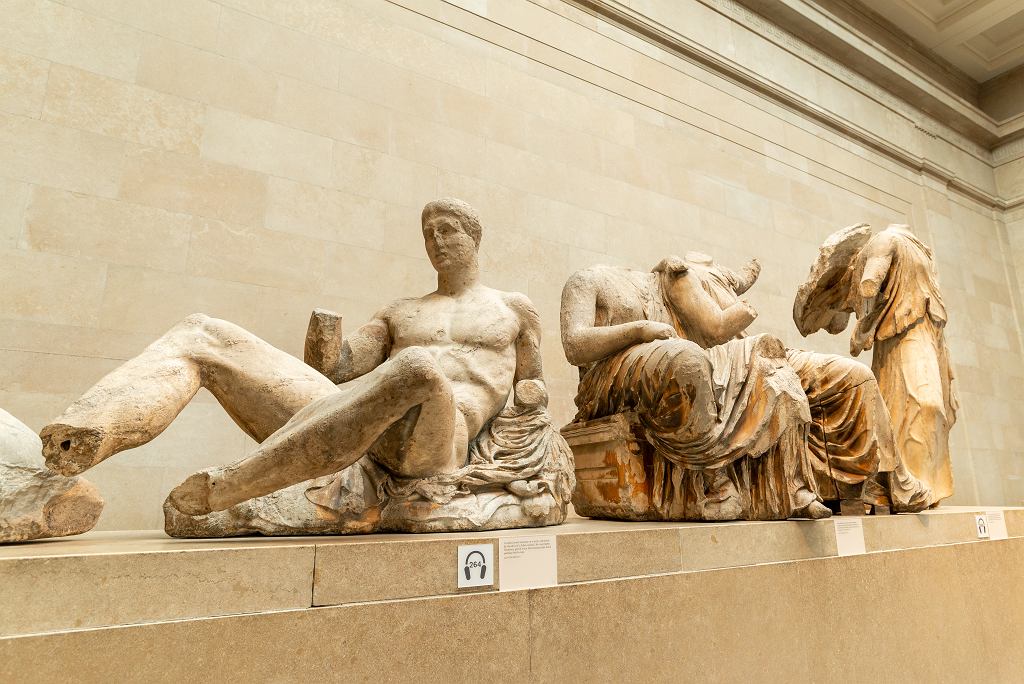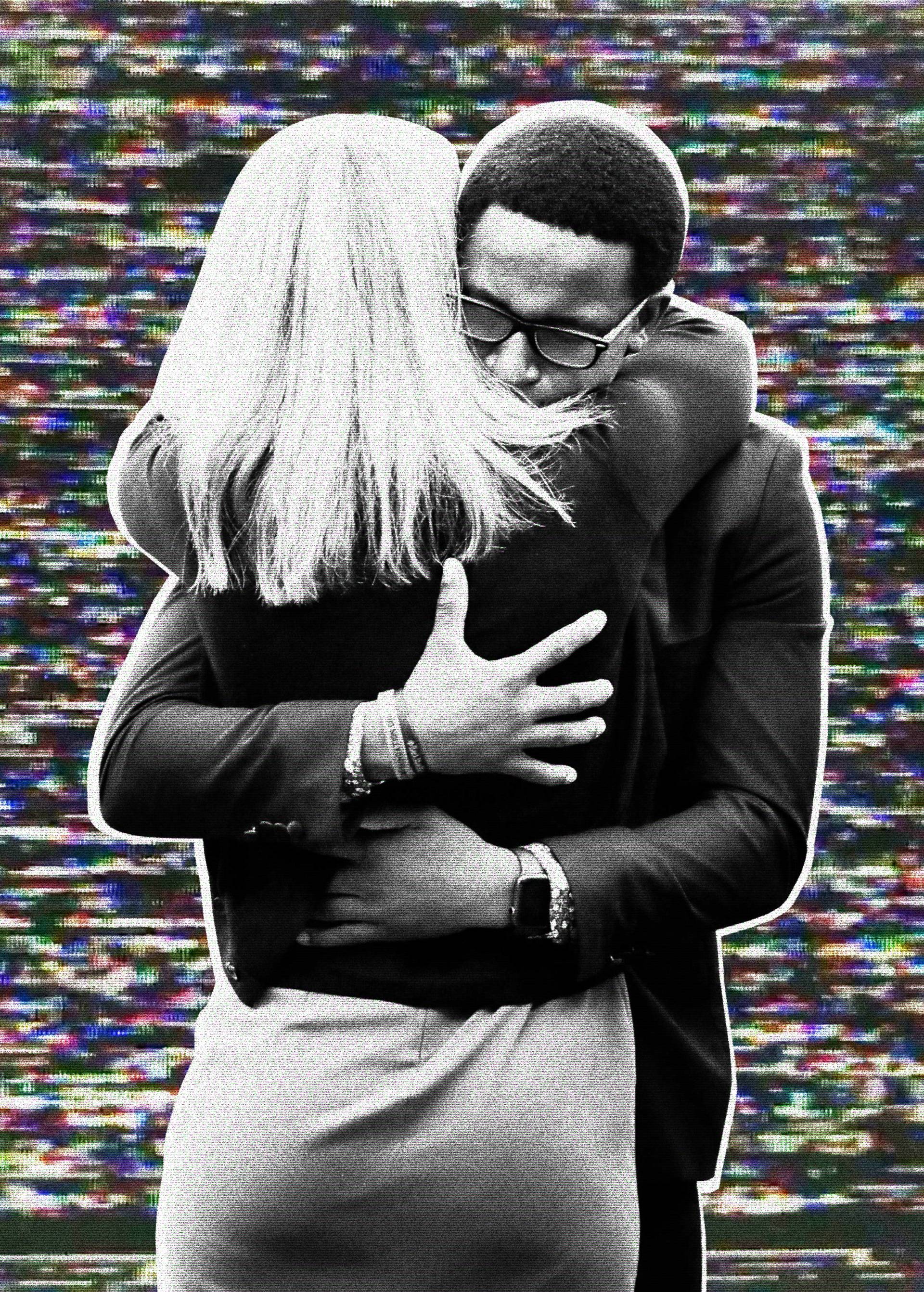 Berlin – rzeźby w Muzeum Pergamonu (Marta Błażejowska/Agencja Wyborcza.pl)
Berlin – rzeźby w Muzeum Pergamonu (Marta Błażejowska/Agencja Wyborcza.pl)
 Europejskie złodziejstwo zyskało rangę ratowania dzieł sztuki
Europejskie złodziejstwo zyskało rangę ratowania dzieł sztuki
Paweł Smoleński
Francuzi, Niemcy i Brytyjczycy jumali marmury, rzeźby i posągi. A Luwr stał się największym paserskim magazynem w historii.
.
W 1799 r. Thomas Bruce, siódmy lord Elgin, pojawia się jako ambasador Zjednoczonego Królestwa przy otomańskim dworze. Ma stosowne papiery od rządu, reprezentuje dostojną monarchię. Nikt nie pamiętałby jego nazwiska, gdyby nie czasownik „elginizm” rychło zalęgły się w europejskich językach.
Niewiele jest śladów o dyplomatycznej finezji siódmego lorda. Mamy za to wiele dowodów, że ów błękitnokrwisty był pospolitym złodziejem. W szemrany sposób uzyskał od Porty zgodę na grzebanie w ateńskim Partenonie. Wywoził z podległej Turkom Grecji 200 skrzyń antycznych zabytków. A że był niezgrabny i durnowaty, rychło popadł w długi, więc nie mógł restaurować skradzionych artefaktów. W 1812 r. sprzedał skarby brytyjskiemu rządowi, który ukazuje je światu w British Museum.
Przeciwko tak bardzo jaskrawemu złodziejstwu protestował lord Byron. Napisał nawet wiersz oskarżający Elgina oraz imperium o bezprecedensową kradzież. Lecz kto by słuchał Byrona, skoro sam był utracjuszem i naciągaczem? Można w kontrze do jego poezji ustawić zaklęcia i przysięgi składane rozlicznym damom, by je naciągnąć na kasę, i nie ma sądu, który rozstrzygnie, w czym posiadł większą maestrię.
Złodzieje kradli innym złodziejom
Tak oto europejskie złodziejstwo zyskało rangę ratowania dzieł sztuki. Swoich złodziei mieli Francuzi służący Napoleonowi (Luwr stał się największym paserskim magazynem w historii) i Niemcy z wilhelmińskiego Cesarstwa. Jumali marmury, rzeźby, posągi. Jumali – zwłaszcza Brytyjczycy – owinięte całunami mumie, czyli zabalsamowane zwłoki, a świat się dziwował, polerując podeszwami eleganckich trzewików posadzki British Museum, jakie to wspaniałe artefakty – może raczej „fanty”, stosując złodziejską gwarę – oglądają dzięki odkrywcom z Wielkiej Brytanii, Francji czy Niemiec.
Niektórzy złodzieje kradli innym złodziejom. Tak było ze słynnym kamieniem z Rosetty, tak pomocnym przy odczytaniu egipskich hieroglifów. Zrabowali go Francuzi, ich okradli Brytyjczycy, a król Jerzy III Windsor przekazał bezcenną stellę British Museum, żeby – oczywiście – otoczyć zabytek należną troską.

Wielka kopia kamienia z Rosetty w francuskiej miejscowości Figeac, w której urodził się Jean-François Champollion
Słowem – kto chciał i miał ku temu możność, kradł na potęgę. Elginowie wszystkich krajów, łączcie się w złodziejstwie na Bliskim Wschodzie, w Azji, Ameryce, Afryce. I to wzorem przodków, wszak Plutrach wspomina o rabunku Grecji przez Rzymian.
Udział w złodziejstwie mieli Szwedzi, dzisiaj prawie naduczciwi i pokojolubni. Polacy też sporo ukradli. Maestrię w złodziejskim rzemiośle osiągnęli Sowieci i naziści. Nazistom akurat sporo odebrano łupów i zwrócono prawowitym właścicielom. Powód był prosty – przegrali. Sowieci, Brytyjczycy i Francuzi zatrzymali swoje, bo nie tych kradzieży dotyczyły rozliczenia z II wojną światową. Niemcy też nie utraciły wcześniejszych zdobyczy – ołtarz z Pergamonu ciągle cieszy oczy odwiedzających muzeum w Berlinie.
Jeśli złodziej nie wie, że kradnie, to nie kradnie
Jest schyłek XX w., zużytkowano już setki flaszek atramentu na listy żądające zwrotu zabytków – kamieni, rzeźb, marmurowych okładzin, zmumifikowanych zwłok – krajom ich pochodzenia. Z listów niewiele wynika. To korespondencja między ludźmi z cenzusem, więc nikt nie nazywa złodziei po imieniu, usprawiedliwiających się przebrzmiałymi paragrafami, wymuszonymi pozwoleniami i kwitkami bez znaczenia, byleby nic nie oddać.
 ‘Marmury Elgina na wystawie w British Museum. Wielka Brytania, Londyn, 23 listopada 2007 r.
‘Marmury Elgina na wystawie w British Museum. Wielka Brytania, Londyn, 23 listopada 2007 r.
Ks. prof. Józef Tischner mawiał, kierując się rozumem i dobrocią serca, że jeśli złodziej nie wie, że kradnie, wówczas nie kradnie, bo nie ma świadomości czynu. Może więc takiego złodzieja nie należy piętnować, ale jak najbardziej należy go uświadomić, że czyni zło. Lecz – jestem pewien – wielu opiekunów skradzionych „fantów”, absolwentów Oksfordu i Sorbony, o zasłużonych przez wieki nazwiskach, choćby i monarszych, nie czytało Tischnera. Lub czytało, ale krótko przed snem, a ten ich zmorzył zaraz po fragmencie, że złodziej nieświadomy złodziejstwa nie kradnie. Po prostu nie.
Dzieła sztuki wrócą do domu?
Jest rok 2122, sto lat po naszych czasach.
W jednej z bliskowschodnich satrapii dyktator zarządził, że właśnie wstaje z kolan wraz z narodem, czego naród winien się bardzo bać. Więcej – dzierżymorda powiada, iż jego dominium to kolebka i praprzyczyna, przedmurze oraz jedyny strażnik wartości. W takich klimatach największy poklask zyskuje się przy spotkaniu na grobach, co z tego, że dawno opłakanych.
Pod murami zamku Windsor zbiera się grupka komandosów. Uprzednio zaprogramowane drony tylko czekają na sygnał z centrali. Bezzałogowe samoloty unoszą w powietrze sarkofagi z dawno zmarłymi brytyjskimi monarchami. Leje, jak zazwyczaj na Wyspach.
Niewiele później w narodowym muzeum gdzieś na Bliskim Wschodzie urządzone jest uroczyste otwarcie nowej wystawy. Z pełną dbałością o artefakty.
Królowa Elżbieta II była nie tylko niedostępną babcią
Dla pełnej jasności zaznaczam, że ani myślę żartować ze śmierci Elżbiety II, choć zdaje mi się, iż ta polska żałość nad zgonem brytyjskiej monarchini jest – jak to w Polsce – wymyśloną pozą, bowiem Polak najlepiej wygląda w bólu i w poczuciu straty. W innych krajach, na oko bardziej przytomnych, też płyną podobnie fałszywe łzy.
 British Museum w Londynie
British Museum w Londynie
Tymczasem Elżbieta II była nie tylko niedostępną, odległą babcią, mimo to uważaną za sympatyczną. Dała tytuły szlacheckie Beatlesom i Mickowi Jaggerowi, a to świadczy o wielkiej wnikliwości, by dojrzeć we flagowym Rolling Stonesie salonowy sznyt.
Była też dziedziczką dobrego i złego, co zafundowała światu jej rodzina. Mało o tym opowiadała. Nie mierzę zaprzeszłych wydarzeń dzisiejszą siatką pojęć. Wiem za to, że Windsorowie nie czytali Tischnera, co w końcu jest luką w wykształceniu. Nie są w tym wyjątkowi.
 Paweł Smoleński – Reporter, publicysta, od 1989 roku dziennikarz “Gazety Wyborczej”.
Paweł Smoleński – Reporter, publicysta, od 1989 roku dziennikarz “Gazety Wyborczej”.
Zawartość publikowanych artykułów i materiałów nie reprezentuje poglądów ani opinii Reunion’68,
ani też webmastera Blogu Reunion’68, chyba ze jest to wyraźnie zaznaczone.
Twoje uwagi, linki, własne artykuły lub wiadomości prześlij na adres:
webmaster@reunion68.com



